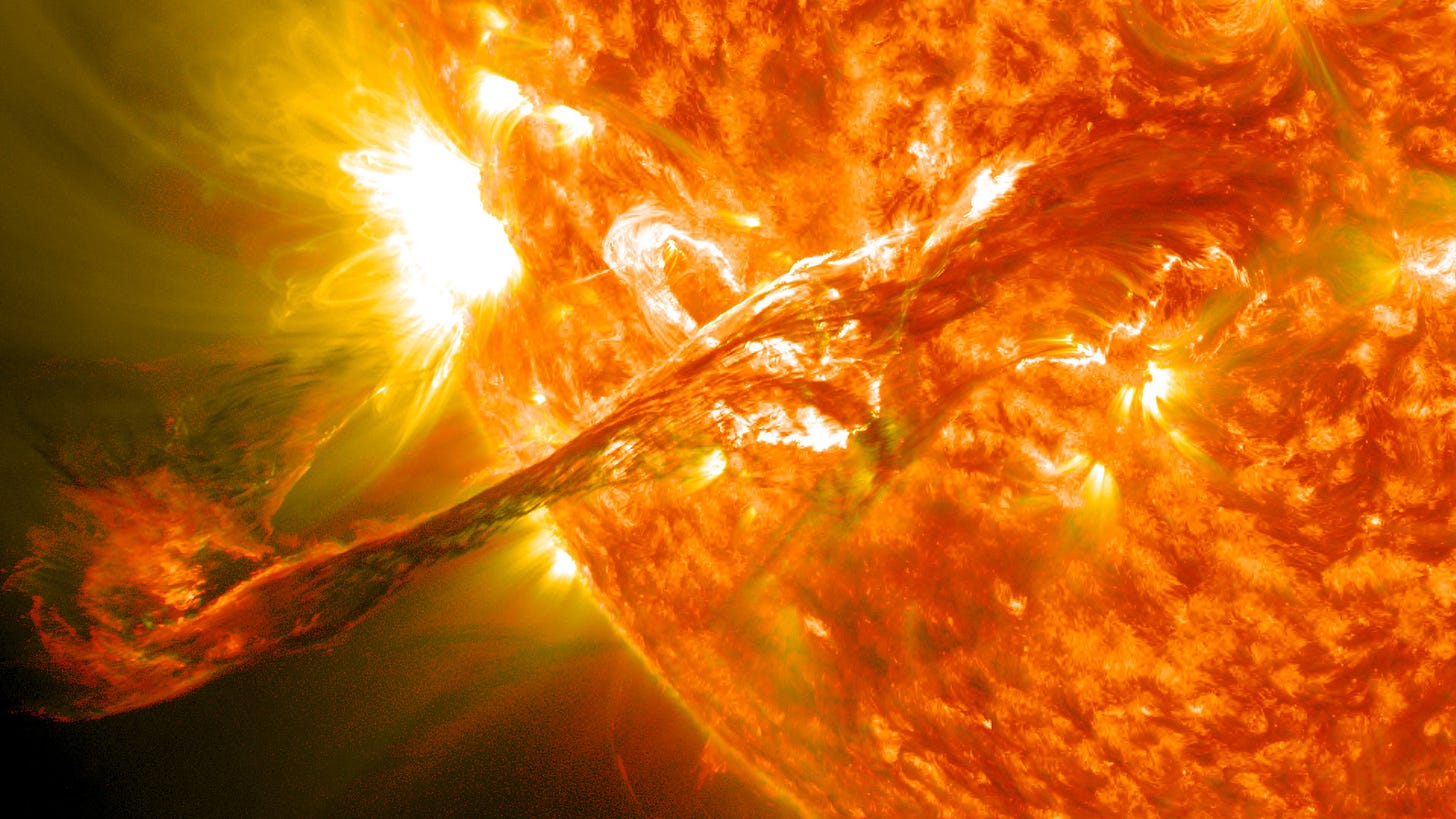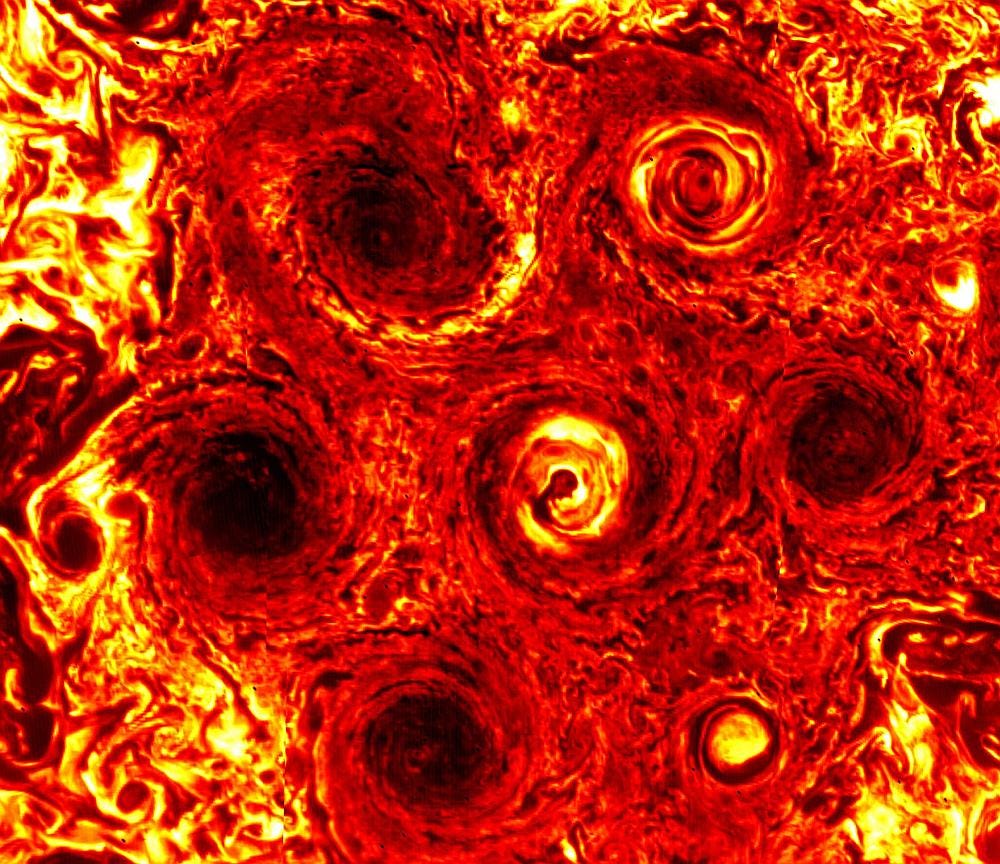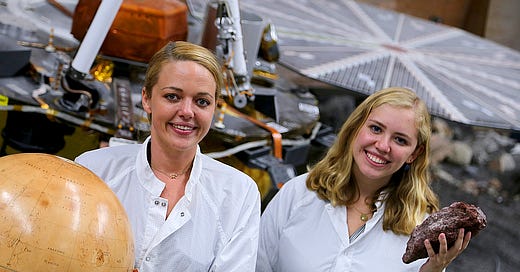The Cosmic Companion December 14, 2019
This week: The challenges of women and POC in astronomy, the stripes of Enceladus, water may be common in exoplanet atmospheres, solar physics revealed by Parker, and a new, odd, cyclone on Jupiter.
Hello everyone!
This week, we examine challenges faced by women and people of color in astronomy and space sciences, we see how four distinctive stripes formed on Enceladus, and our first guest column from Rob Lea looks at how water may be common in small amounts in the atmospheres of distant worlds. We will also learn about mysterious physics of the Sun revealed by the Parker Solar Probe, and an odd cyclone forms on Jupiter.
Listen and subscribe to Astronomy News with The Cosmic Companion through any major podcast provider, including iTunes, Spotify, or TuneIn! Or, listen in at: https://thecosmiccompanion.substack.com.
The Cosmic Companion also offers a premium newsletter, featuring weekly exclusive videos, the astronomy comic of the week, and more. Just $5 a month, or $50 a year! Sign up at: https://thecosmiccompanion.substack.com.
Or, you can buy me a cup of coffee for my work!
Let’s take off!
The Week in Space
Greater Diversity Makes for Better Science, Studies Suggest
Science has a long history of discriminating against non-male, non-white researchers, and despite some advances in recent decades, many scientific institutions still have a long way to go, a new study reveals. However, a new day may be dawning, thanks to technology and the quest for knowledge.

Jet Propulsion Laboratory interns Heather Lethcoe (left), Lauren Berger (right), work to determine the landing site for NASA’s upcoming InSight lander headed to the Red Planet. They are among the young women now entering the field of professional space research. Image credit: NASA/JPL-Caltech/Lyle Tavernier
At its best, science is supposed to be devoid of irrational thought, and researchers are supposed to accept reproducible, verifiable evidence regardless of any (non-scientific) preset notions. But, astronomers and other researchers are human, and scientific institutions are often caught in intolerance disguised as tradition.
A new study of researchers in space sciences shows women of color report a greater degree of both gender and racial harassment than any other groups in their fields of study, including white women or non-Caucasian males.
Read more: http://bit.ly/Greater-Diversity-Better-Science
How Enceladus Earned its Stripes
Orbiting Saturn, Enceladus is one of the most likely places in the Solar System for us to find life. But how did this water-rich moon get its distinctive stripes? The Cosmic Companion talks with Doug Hemingway of the Carnegie Institution for Science.

The ribbons of Enceladus — (left to right) Damascus, Baghdad, Cairo, and Alexandria. Image credit: NASA/ESA/JPL/SSI/Cassini Imaging Team
Enceladus is a tiny moon which is home to vast quantities of water, making this world a prime target for researchers searching for life in our solar system. Spacecraft viewing the south pole of this icy satellite showed the region is covered in tiger-like stripes, baffling astronomers.
Now, new research details the process by which these stripes form as water from a deep, subsurface ocean rises from underneath a layer of ice onto the surface of the tiny moon.
Read more: http://bit.ly/Enceladus-Stripes
Water may be Common in Exoplanet Atmospheres — but in Small Amounts
New research has confirmed that water may be abundant in exoplanet atmospheres — but in smaller amounts, than previously believed — casting doubt on planetary formation models.

The most extensive survey of atmospheric chemical compositions of exoplanets to date has revealed trends that challenge current theories of planet formation and has implications for the search for water in the solar system and beyond. Image credit: Amanda Smith
A team of researchers led by the University of Carnegie have utilised atmospheric data from 19 exoplanets to conduct the most detailed study of atmospheric chemical compositions to extra-solar planets to date. The survey reveals what may constitute a significant challenge to current theories of planet formation.
The team obtained detailed measurements of chemical and thermal properties from exoplanets with a wide range of sizes, ranging from ‘mini-Neptunes’ — roughly 10 Earth masses — to ‘super-Jupiters’ — approximately 600 Earth masses. This vast range of sizes was also reflected in the temperatures of the exoplanets — ranging from 20 C to 2000 C. The atmospheres are rich in hydrogen, much like the atmospheres of giant planets in the solar system, but they orbit stars that are different to our own.
Read more: http://bit.ly/Water-Exoplanet-Atmospheres
Secrets of the Sun Told by Parker
The Parker Solar Probe — the first spacecraft to ever “touch” the Sun, is revealing deep, hot secrets about the physics of our local star.

A coronal mass ejection which erupted from the Sun on August 31, 2012. Fortunately, it wasn’t headed our way. Image credit: NASA Goddard Space Flight Center
Launched August 12, 2018, the Parker Solar Probe is the first spacecraft ever designed to skim the surface of the Sun, in an quest to understand the physics underlying some of the most mysterious activities of our parent star. Since it’s launch, the robotic explorer has collected gigabytes of data about the Sun and the atmosphere surrounding it.
Solar storms can endanger satellites and electronics on Earth, and by better understanding these outbursts, we may find means by which we can predict these events, and protect modern civilization from their effects. Astronomers also want to know more about the solar wind — a constant outflow of material from the Sun.
Read more: http://bit.ly/Secrets-Sun-Parker
Strange Cyclones on Jupiter Welcome New Member
An unusual system of cyclones detected on Jupiter have now been joined by a new storm. Here’s the story of how a threat to the Juno mission turned into a voyage of discovery.

The new cyclone (seen at the bottom right) joined five other storms to form a hexagon at Jupiter’s south pole. Image credit: NASA/JPL-Caltech/SwRI/ASI/INAF/JIRAM
Orbiting the largest planet in the solar system, the Juno spacecraft discovered a newly-formed cyclone, huddled together with a system of storms near the south pole of that massive world.
This system was recorded during the spacecraft’s 23rd pass on November 3, 2019, and was reported by NASA on December 12. Images of the system were recorded while the vehicle was just 3,500 kilometers (2,175 miles) from the cloud tops of this behemoth world.
Read more: http://bit.ly/Strange-Cyclones-Jupiter

Coming soon: The First Woman on the Moon: The Past and Future History of Women in Space by James Maynard
Thanks for reading!
I’m very excited about upcoming changes for The Cosmic Companion, which will offer new and exciting features, articles, and more. This is the second-to-last newsletter of the year for us, and I am looking forward to the holidays and my upcoming marriage and honeymoon!
You can also listen to my new podcast, Astronomy News with The Cosmic Companion, available on all major podcast distributors, including iTunes, Spotify, and TuneIn! Or, tune in at: https://thecosmiccompanion.substack.com. You can also now add Astronomy News with The Cosmic Companion to your flash briefings on Amazon Alexa!
If you want to keep up with the latest updates and news about astronomy and space exploration, visit www.thecosmiccompanion.com, join my Facebook page, subscribe on YouTube, and follow @TheCosmicCompanion on Instagram and @CompanionCosmic on Twitter.
Remember - VIP subscribers receive this newsletter, plus a second weekly newsletter with sneak previews of each video episode of Astronomy News with The Cosmic Companion, an astronomy comic of the week, rare space photos, and more! Plans start at just $5!
Do you know someone else who would love this newsletter? Please share! Invest in knowledge with a premium subscription for yourself or a loved one today (including advance viewings of my weekly video show)! Or, I’d love it if you could buy me a cup of coffee - I LOVE coffee! Thanks!
Astronomy - Don’t Leave Home Without It!
- James


